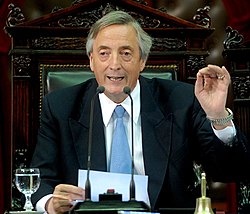 | |
| Total population | |
| 149,082 (by birth, 2022) [1] 439,582 (by ancestry, 2018) [2] 1.0% of the Argentine population | |
| Regions with significant populations | |
| |
| Languages | |
| Religion | |
| Related ethnic groups | |
| Chileans Chilean Americans · Chilean Brazilians |
Chilean Argentines are Argentine citizens of Chilean descent or Chile-born people who reside in Argentina. Argentina is home to the largest Chilean diaspora group. According to the Argentine 2010 census, there are 191.147 Chileans living in the country (born in Chilean territory). An estimate 2003-2004 estimated Chilean descendants, born in Argentina to a Chilean father or mother, in 190,000. [3]
Contents
Other figures, such as those by The World Factbook, show a total population (including those born in Chile and their descendants) of 429,708 people. [4]
Chilean immigration to Argentina dates back to colonial times. During the War of Independence of Chile, the period known as the Patria Vieja , ended with the defeat of the patriot forces at the Battle of Rancagua on October 1 and 2, 1814. The patriots who were crossing the Andes took refuge in the United Provinces of the Río de la Plata. Some of them returned to their country with the Army of the Andes in 1817 achieving restore the independence of Chile.
The countries share language, customs, history, and the Argentina–Chile border, one of the longest borders in the world, among other things.









